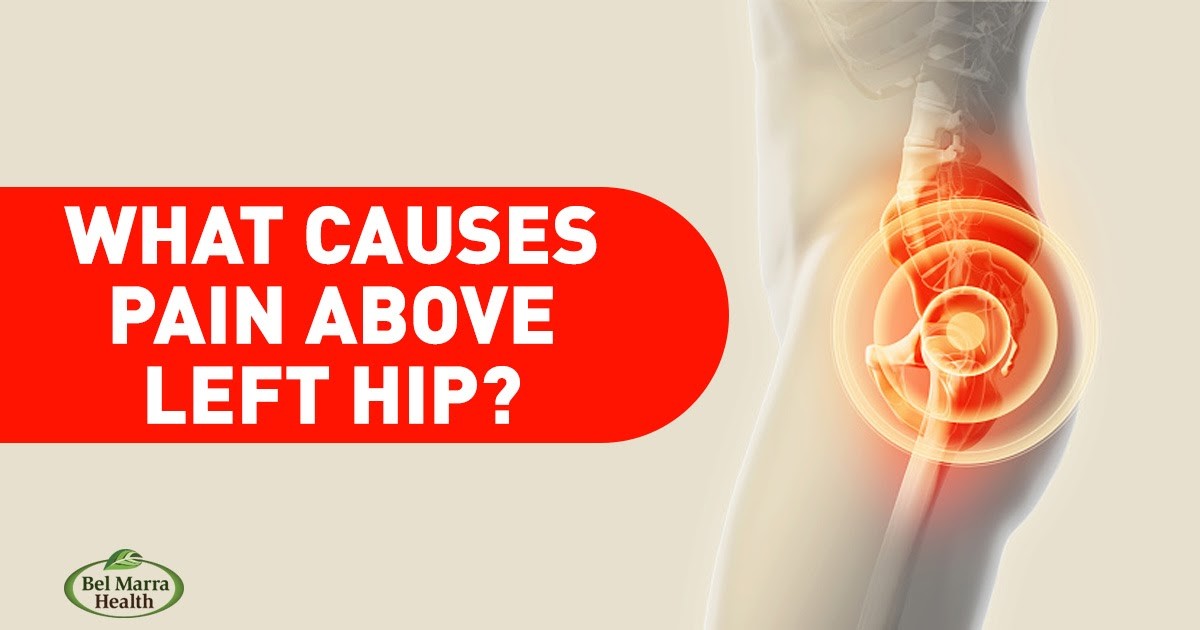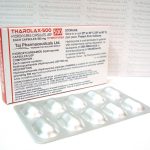
Contents
- 1 Causes of Pain on the Left Side Above the Hip
- 1.0.1 Signs and Symptoms of Left Side Pain Above the Hip
- 1.0.2 Causes of Left Side Pain Above the Hip
- 1.0.3 Diagnosis for Left Side Pain Above the Hip
- 1.0.4 Treatments for Left Side Pain Above the Hip
- 1.0.5 What Does Hip Tendonitis Feel Like?
- 1.0.6 Symptoms of Hip Tendonitis
- 1.0.7 Snapping Hip
- 1.0.8 Treating Hip Tendonitis
- 1.0.9 Injuries Similar to Hip Tendonitis
Causes of Pain on the Left Side Above the Hip
There are several reasons you might experience left side pain above the hip. It could be due to an injury that will heal on its own or a sign of an undiagnosed illness.
People often experience pain in different areas of their body, including the hip. Persistent left side pain above the hip could indicate an underlying health issue that requires medical treatment.
If the problem does not improve or comes and goes over a long period, it is important to seek further medical treatment. Delaying a visit to the doctor could potentially jeopardize your long-term health.
Signs and Symptoms of Left Side Pain Above the Hip
Pain on the left side above your hip may be the first sign that something is wrong. Other symptoms that may accompany this discomfort include:
- Reduced range of motion in the hip
- Stiffness
- Redness
- Diarrhea
- Constipation
- Nausea and/or vomiting
- Weight loss
- Blood in stool
- Fatigue
- Joint inflammation
- Lack of appetite
- Tenderness in the abdomen
- Signs of bruising
- Pain when breathing
- Numbness
- Tingling sensation
Causes of Left Side Pain Above the Hip
Several medical reasons can contribute to pain on the left side above your hip. Some common health disorders that may cause this discomfort include:
Arthritis
Arthritis is a disorder that causes pain and swelling in joints. Certain types of arthritis can result in pain above your left hip.
Rheumatoid arthritis (RA) is a chronic form of arthritis that can affect the hip and other joints in the body. It occurs when the immune system attacks healthy joint tissue. RA can also affect other parts of the body, such as the heart, lungs, and nerves.
Ankylosing spondylitis is a form of arthritis that causes inflammation in the spine, particularly the lower part near the hips. This can result in pain above your left hip and stiffness.
Diverticulitis
Diverticulitis is a condition where bulging pouches develop in the colon, which can become swollen and infected. Abdominal pain, potentially on the left side above the hip, can be a symptom of diverticulitis.
Muscle strain
A muscle strain, or pulled muscle, occurs when a muscle is stretched beyond its capacity, causing tears. You can strain a muscle in your hip or lower back through exercise or improper movement. Other side effects of muscle strain include swelling, skin bruising, and difficulty moving that part of your body.
Osteomyelitis
Osteomyelitis is a condition characterized by swelling or inflammation in the bone tissue, usually caused by an infection. For example, a bacterial infection that enters the bloodstream can spread to the vertebrae in the spine, resulting in pain on the left side above the hip.
Pinched nerve
As you age, the discs in your back can shrink, pushing vertebrae closer together and pinching the nerves around and above your hip. Pinched nerves can cause symptoms such as leg weakness, tingling sensations, and pain that radiates from your back to your foot.
Kidney stones
Kidney stones form from minerals and salts dissolved in urine. They can grow in size and painfully pass through the urinary tract, eventually being expelled when you urinate. Other symptoms of kidney stones that could contribute to pain on the left side above your hip include:
- An urgent need to urinate
- Burning sensation during urination
- Blood in urine
- Nausea
- Vomiting
Diagnosis for Left Side Pain Above the Hip
Your doctor will likely ask about your medical history and the duration of your symptoms. After a physical exam, additional tests may be ordered based on the findings. These tests include blood and urine tests to check for signs of disease, endoscopy to examine digestive issues, and imaging tests, such as x-rays, to detect abnormalities in bones or tissues.
Treatments for Left Side Pain Above the Hip
The prescribed treatment for left side pain above the hip depends on its cause. It may include medication for pain management or inflammation, antibiotics for infections, surgery to address the root cause, or lifestyle changes.
What Does Hip Tendonitis Feel Like?
Tendonitis can affect any tendon in your body, including those in your hips. Hip tendonitis, also known as iliopsoas tendonitis, is a common injury that can usually be treated at home.
Tendons are thick structures that attach muscles to bones, and tendonitis often occurs near joints. The iliopsoas muscle responsible for hip flexion connects to the upper thigh via a tendon. Overuse of this muscle can inflame the tendon, resulting in hip tendonitis.
Hip tendonitis typically develops gradually, causing a dull ache in the hip that worsens over time. If left untreated, it can lead to difficulty moving the hip. Athletes are particularly susceptible to hip tendonitis due to activities such as running, biking, swimming, and intense sports.
Symptoms of Hip Tendonitis
The main symptom of hip tendonitis is a slow onset dull ache in the hip. Unlike muscle strains or ligament sprains, there is no sudden intense pain. If you suspect hip tendonitis, consult with a healthcare provider who will perform a physical exam to assess pain and tenderness in the hip area. Additional tests like x-rays, MRIs, or bone scans may be required to rule out other conditions or injuries.
Snapping Hip
Snapping hip often accompanies hip tendonitis. It occurs when the inflamed iliopsoas tendon rubs against the hip socket bone, causing a clicking sensation. This clicking usually happens during specific movements like raising and lowering the leg or twisting the hip.
The symptoms of snapping hip include pain and clicking in the groin or front area of the hip. Symptoms worsen when bending the hip, especially against resistance. Tender areas might be present in the hip or groin. A healthcare provider can diagnose snapping hip through examination. Treatment options include rest, anti-inflammatories, cortisone injections, or surgery if necessary. Asymptomatic snapping hip typically does not require treatment.
Treating Hip Tendonitis
The best approach to treat hip tendonitis is to reduce inflammation and alleviate pain. If you are physically active, it is advisable to pause your exercise routine and rest. For mild cases, over-the-counter pain medication and the following RICE method can help:
- Rest: Avoid using your hip tendon for a couple of days.
- Ice: Apply ice wrapped in a towel to the affected area for 20 minutes every few hours.
- Compression: Securely wrap the area with a bandage or soft brace, removing it before bedtime.
- Elevation: If possible, elevate your hip by lying on a pillow.
If symptoms persist, consult with a healthcare provider. Physical therapy may be recommended to improve flexibility and strengthen the hip area. In severe cases, surgical options exist, but most people with hip tendonitis do not require surgery unless other treatments have been unsuccessful in alleviating constant pain.
Injuries Similar to Hip Tendonitis
Similar injuries may cause or contribute to hip pain, such as:
- Gluteus Medium Syndrome: Pain on the outer part of the hip, limping, pain or weakness when raising the leg away from the body.
- Piriformis Syndrome: Intense pain in the back of the hip, radiating down the leg, weakness, and tightness during hip rotation stretches.
If you suspect hip tendonitis or a related injury, consult with a healthcare provider to receive an accurate diagnosis and discuss treatment options.
Sources: Beaumont Health, Cedars Sinai, John Hopkins Medicine, MedlinePlus, National Health Service, NIH, Temple Health, UC San Diego Health, Urology Care Foundation


